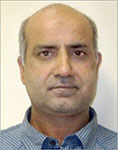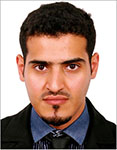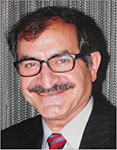Evaluation of free porosity in shale gas reservoirs (Roseneath and Murteree formations case study)
Maqsood Ahmad A , Ali Hussain A , Reuben Koo A , Hoang Nguyen A and Manouchehr Haghighi AAustralian School of Petroleum, The University of Adelaide
The APPEA Journal 52(1) 603-610 https://doi.org/10.1071/AJ11049
Published: 2012
Abstract
Organically rich shale rocks represent a voluminous, long-term, global source of natural gas and could be referred to as shale gas. Unlike conventional gas reservoirs, shale gas reservoirs have very low effective porosity and permeability. Therefore, an evaluation of porosity in such a tight rock is a challenge. The Roseneath and Murtree shale formations in the Cooper Basin are believed to be potential shale gas reservoirs in SA. Core samples of Murteree and Roseneath carbonaceous shales from the Della–4 and Moomba–46 wells were collected to measure interstitial and intergranular porosity in these prospective shale gas reservoirs in the Nappamerri Trough.
After initial preparation, the shale core samples were investigated to determine the pore size classification and effective free porosity using the mercury injection capillary pressure technique (MCIP). The focused ion beam/scanning electron microscopy (FIB/SEM) technique was then employed to obtain micro and nano scale images of the core samples. Then, helium porosimetry was used on the samples to measure their effective porosity. Finally, the pyknometry method was used on the crushed samples to measure their total intergranular porosity.
MICP techniques revealed that the samples were mainly comprised of meso-porosity, with the pore throat diameters between 2–50 nanometres and an effective porosity of less than 2%. Helium porosimetry also showed an average porosity of less than 2%. Liquid pyknometry revealed an average absolute porosity of 30.5% for Murteree shale and 39% for the the Roseneath shale, which is much higher than the results from the MCIP technique and helium porosimetry. This is an indication of having very high isolated porosity and very low permeability. The findings were analysed and validated by the use of SEM images, displaying high amounts of isolated porosity, confirming the high porosity measurement from the pyknometry technique. The results achieved strongly emphasised that gas prone, over-mature, carbonaceous shales have very low effective but very high total porosity.
Therefore, it is envisaged that total intergranular porosity holding compressed gas in over-mature source rocks cannot be evaluated using the helium porosimetry and mercury injection techniques. The pyknometry technique supported by the SEM images is an alternative method; however, this method can only measure total, rather than effective, porosity.

Maqsood Ahmad is a PhD candidate in the Australian School of Petroleum, at the University of Adelaide. After completing a postgraduate degree in geology at The University of Punjab (Lahore, Pakistan), he was appointed as a research assistant in some projects funded by the Pakistan Science Foundation in the Institute of Geology (Lahore, Pakistan). Later, Maqsood studied for a Masters in Information Technology and Master of Engineering Science in Petroleum Engineering from the Queensland University of Technology (Brisbane), and UNSW (Sydney), respectively. His research interests include source rock evaluation for hydrocarbon generation potential, and characterisation of source rocks as potential unconventional natural gas reservoirs using conventional and unconventional techniques. After joining the Australian School of Petroleum, Maqsood has enhanced understanding in the application of micro and nano CT-scanning, FIB/SEM, QEMSCAN, high pressure gravimetric analyser for adsorption and desorption, and molecular dynamic simulation techniques for resource evaluation in unconventional gas reservoirs like shale gas resource industry. Member: SPE, PESA and AAPG. mahmad@asp.adelaide.edu.au |

Ali Hussain Alamar joined the University of Adelaide in 2007 and graduated with Honours in 2011, as a petroleum engineer. He was a sponsored student by the Saudi Arabian Oil Company (Saudi Aramco). Before he graduated, Ali worked on several projects for the Advanced Research and Development Department. He is, at present, working in the drilling and work-over business-line of Saudi Aramco (the Offshore Drilling Department). ali.alamar@student.adelaide.edu.au |

Reuben Koo graduated with a bachelor’s degree with Honours in petroleum engineering from the University of Adelaide. During the final year of his degree, Reuben completed a final-year Honours project titled Intergranular/Interstitial Porosity Measurements in Shale Gas Reservoirs Using Conventional Techniques. At present, Reuben is working as a part-time technical assistant at OCCAM Technology; his main duty involves well log digitising. He was also involved in a short-term project with Ahava Energy where he managed the drilling vendor transaction report of exploration wells from 2010–11. Member: SPE and IEA. reuben.koo@student.adelaide.edu.au |

Hoang Nguyen’s biography not supplied. h.n.nguyen@student.adelaide.edu.au |

Manouchehr Haghighi is a senior lecturer at the Australian School of Petroleum, the University of Adelaide. He and his team are heavily involved in different research projects about both conventional and unconventional reservoirs. Before joining the University of Adelaide in 2009, he was associate professor of petroleum engineering at the University of Tehran, Iran. During 2000–09, he supervised more than 40 MSc and PhD students. From 1996–2000, he worked with the National Iranian Oil Company and was the director of a program for training of NIOC staff at several universities in the US, the UK, Canada, France, and Norway. He was a visiting professor at the University of Calgary from 2007–08. He has published numerous articles in peer review journals, presented many papers at international conferences, and has served as a reviewer for several journals. Member: SPE. mhaghighi@asp.adelaide.edu.au |


